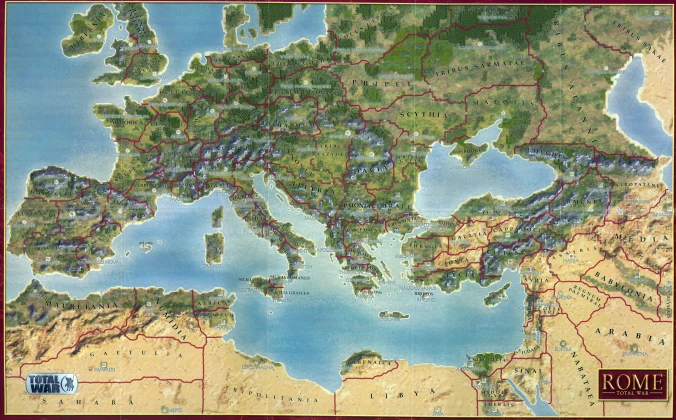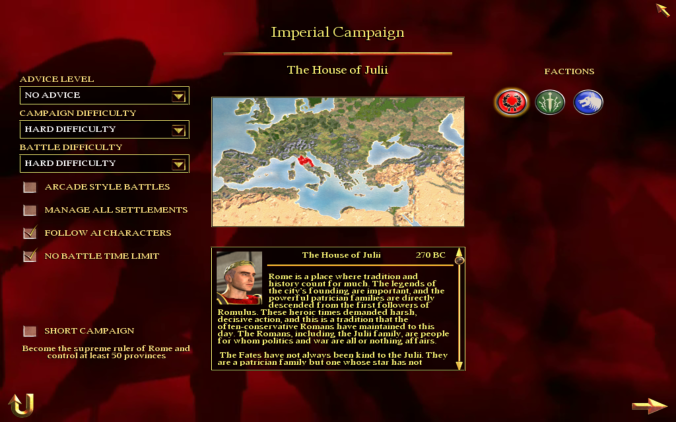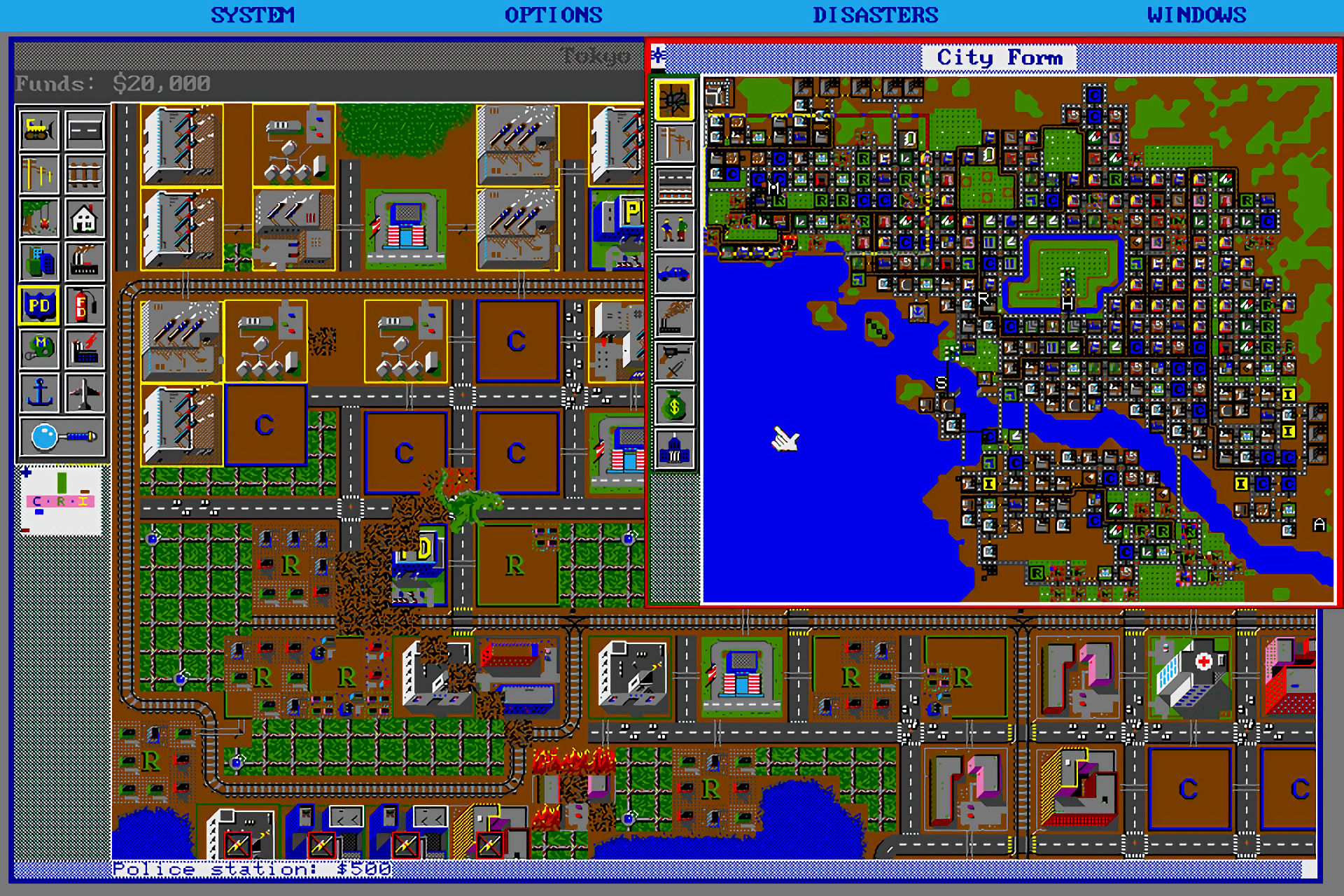Released on 22 Sep, 2004, Rome: Total War is the God of all strategy games. I have clocked up 600 hours on the Steam version of the game but I estimate I’ve probably played closer to 2000 hours overall since buying the original boxed game on release way back in 2004. I still remember going through a three disc install and then patching before being able to play. I remember absorbing the included campaign map whilst exchanging discs before loading up the game and starting my first campaign. Just look at this map!

Rome was the first Total War game to feature a 3D map and 3D units (the units in Medieval and Shogun were sprite-based). Gameplay was a combination of turn-based on the campaign map and real time battles when two armies met. The number of units available numbered in the dozens with infantry, cavalry, missile troops and siege engines all featuring. As you moved up the tech-tree the units improved. Seeing a battle line formed by hard-hitting Roman Legionnaires with archers arrayed behind them and cavalry ready to flank unsuspecting enemies was a joy to behold. The number of tactical options on the battlefield simply never got old or boring.
In Rome you play as one of three Roman families. Each has a similar unit make up with minor differences in unique units appearing later in the game. At the start you’re allied with the other families despite them being rivals. The ultimate goal is to see to it that your family rules in Rome so it’s a judgement call whether you should support the other Roman families against mutual enemies. If they grow strong the inevitable civil war will be more difficult but having their support early game is useful.

The real joy on Rome though was the option to play as one of Rome’s enemies. In total there were twenty-one factions, four Roman (including the Roman Senate) and a number of others which became playable if you destroyed them in a campaign. Many of the other factions could be unlocked by playing about with the game files and there are mods allowing you to play all including the rebel/barbarians. For me it was mighty Carthage which took prime of place. Defending against Rome as they attempted to invade Sardinia and Sicily was always a pleasure, and turning the table and invading the Italian peninsula made for some impressive adventures.
But Rome was not just battles. Each faction had a family tree featuring elite general units. These could turn the tables in a battle but also proved to be effective managers offering boosts to production as well as siring more offspring to further and strengthen the family line. Do you commit your faction leader to a battle knowing his battle prowess will be welcome against the enemy or keep him safe so that more generals can be born and grow to lead future generations? The number of times a high-ranking general being killed in battle has changed your fortunes in the game are numerous.
Diplomats could form alliances and trade deals or bribe armies to join your side, spies could gather information on enemy cities and armies or create revolt within cities, whilst assassins could kill of characters before they got to fight or could destroy key structures weakening the enemy behind the lines. There are so many different ways to play Rome that each play through was different.
Rome was the third game in the Total War series. Since then eleven more games have been released each technically superior to the previous iteration, but there is nothing like Rome. Complex yet simple enough to pick up it could take many hours to master. I have tried many of the later Total War titles but always return to Rome.



